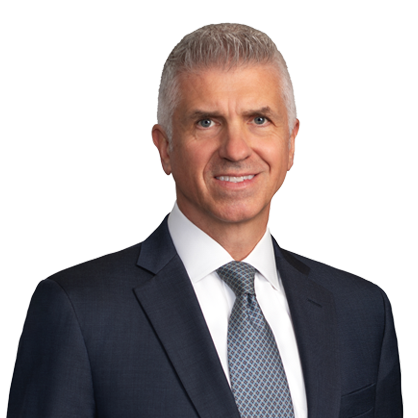Insights
Thought Leadership
Generations Fall 2021 - Investing in Digital Assets, A Race to the Mainstream: The Emergence of Institutional Custodians
In a recent survey of more than 150 family offices worldwide, Goldman Sachs reported that about 15 percent of family offices globally and about 25 percent in the Americas have exposure to cryptocurrencies to date. While most respondents are not currently invested in cryptocurrencies or other digital assets, almost half are considering initiating exposure in the future as a hedge against cash.
Among respondents with no current cryptocurrency exposure, their most-cited reason for caution stemmed from skepticism about cryptocurrencies as a store of value. Apart from cryptocurrencies, Goldman Sachs expects to see family offices monitoring the evolution of and potential use cases for other digital assets, such as utility tokens and nonfungible tokens (NFTs), and blockchain technology more broadly for future investment opportunities.
There are unique risks associated with digital trading platforms and available custodial solutions for securing digital assets. Digital asset custodians operate, in many ways, in a manner similar to traditional financial custodians, in that their primary role remains the safekeeping of the investor's digital assets. However, unlike traditional assets such as fiat currency, stocks, bonds and gold, a digital asset custodian secures custody of a digital asset such as cryptocurrency by holding the private key on behalf of the asset holder, ensuring that it cannot be accessed by anyone else. The private key is the only access to digital assets, and losing it is likely to result in the loss of all the assets, with little or no possibility of recovering access to them.
In Switzerland, where digital asset regulation is very advanced, private banks have been delving into cryptocurrencies and other digital assets for some time and have developed some fairly robust, albeit opaque, service offerings for trading and acting as custodians for these digital assets. In North America, where regulators have been slower to respond to rapidly emerging markets for digital assets, traditional custodial institutions have also been slower to respond. The solutions that are emerging in the United States and Canada, however, appear to offer greater transparency than providers of earlier solutions did. Family offices that are considering allocating a portion of their portfolio to this space will likely find this higher level of transparency appealing.
Family offices are encouraged to look to established custodians to secure their digital assets for a number of reasons. Practically, it may be preferable to go to a firm with which they have an existing relationship. Often the main driver of this decision, though, is the increased comfort found with the backing of a significant institution with strong governance and control as well as a sizable balance sheet.
Significant hurdles remain that must be overcome if traditional custodial banks are to engage with this emerging asset class. First and foremost, unlike more traditional assets, such as stocks, bonds and fiat currencies, digital assets do not easily fall into clear categories. Some digital assets seem more like commodities than currencies. Others resemble securities, and some resemble certificates of title or authenticity for collectible assets. The features of some, such as utilities tokens, are hard to analogize to traditional assets. The custodial institutions for these assets must demonstrate a clear understanding of how clients will transact with their digital assets. Further, given the lack of regulation in this space, management of settlement risk and settlement time frames will need to be clearly articulated to the client.
Second, custodians need to clearly demonstrate the ability of their systems to secure and manage key pairs to ensure secure custody of digital assets. This means protecting the private keys and developing secure workflows to support transactions in and out of custody (deposits and withdrawals). So far, custodians have relied on cold (offline) wallets created and managed in air-gapped environments to provide an acceptable level of security. Conversely, most hackers have concentrated on hot (online) wallets, which are used to provide clients with quick access to their assets. Multi-signature wallets and wallets based on threshold algorithms such as state space search (SSS) and model predictive control (MPC) mitigate some of the risks of hot wallets. In short, to protect against cybersecurity and theft risks, clients should require clear and concise documentation and agreements describing each custodian's technology architecture, including use of cold, warm and hot wallets, for storage; each custodian's use of risk and fraud detection tools to block hackers and money launderers; and each custodian's strategy for providing a secure bridge between the traditional financial world and the new digital asset ecosystem.
Third, it should come as no surprise that digital assets raise significant risk and compliance issues for traditional custodians. Presently, for the most part, digital asset markets offer no contractual relationships or membership standards and provide no means to unwind trades. Unlike regulated financial markets, most digital asset exchanges and other digital asset operators currently have no legal or technological framework to obtain, hold and transmit identifying information for their transaction counterparties. In addition, while there has been clear progress in various jurisdictions with respect to digital assets, service providers operating in different countries answer to different regulatory requirements, with very limited global consensus on cross-border activities.
Over time, it is likely that a trusted ecosystem of institutional participants will evolve to facilitate trading and servicing of these public assets within a smaller, pre-validated network. Presently, however, clients who rely on institutional custodians rely on those custodians to vet the reputation and governance structures of any selected digital exchange to protect against hackers and fraud and to manage operational, regulatory and reputational risks appropriately. Anyone who enters into a custodial agreement for digital assets should be encouraged to engage in extensive technical and legal due diligence covering all features of a custodian's internal processes and procedures.
Although very few global regulators have provided formal frameworks for servicing digital assets, clients should carefully scrutinize the custodian's plan for managing the potential for unforeseen regulatory action in relation to digital assets, including cryptocurrencies and NFTs. While regulation of custodians and digital asset exchanges remains limited, following the dramatic rise in cryptocurrency investments and trading activities over the past few years, regulators are setting their sights on this growing part of the financial services industry. An example of the regulatory interest is the new guidance published in June 2019 by the Financial Action Task Force on how its members should regulate digital asset exchanges.
As governmental agencies make new pronouncements with increasing frequency regarding the likely direction of regulation in each of their jurisdictions, clients will need to continually reevaluate guidance on regulatory issues and develop flexible custodial agreement language that addresses emerging regulatory trends.
Would you like to receive the Day Pitney Generations Newsletter? Sign up here.



